
|
| Accept Cookies | Customize | Refuse Cookies |
Lorenzo sulle Alpi www.juzaphoto.com/p/LorenzosulleAlpi  |
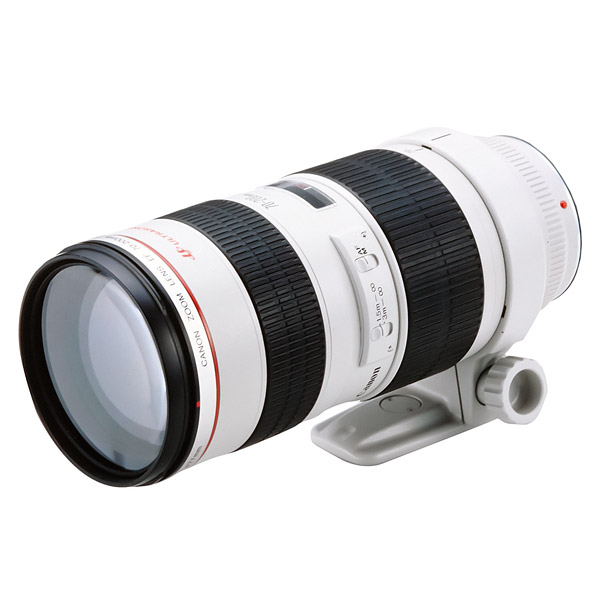 | Canon EF 70-200mm f/2.8 L USM Pros: Price quality, still in production (availability of any spare parts), soft blurry, fast AF, quite defined at TA. Cons: Sharpness not suitable for very dense sensors. Lack of tropicalization. Opinion: Purchased used to match the 77D and later 5Dsr and 7Dmkii. On the last two camera bodies it is pleasantly soft at TA, but without an appreciable loss of detail (the two bodies even if of different format have similar density), on the 77D the loss of definition of recovers by closing even by half a stop. If you have camera bodies with more than 20 megapixels and you want definition you have to take into account the IS ii and IS iii versions. Excellent construction, well balanced on heavy bodies, unbalanced forward on 77D and the like. The AF, helping the brightness, is really good and precise. Fantastic also paired with the 1.4X second version. It does not have major differences in optical quality between the various focal lengths, it suffers a little from the backlight, but it does not create flares and in some cases of portrait the effect is even pleasant. I use it for sports combined with the 7dmkii and for portrait combined with the 5Dsr. I do not hide that to be able to take the ISiii that I tried and as a definition on dense sensors is really superior. I exclude is I and II as it is discontinued. Of note it should be considered that all the slow movements of both AF and Zoom are internal and there are no excursions even towards the camera body; this even if the optics are not tropicalized greatly reduces the absorption of dust inside the optics and mirror / sensor of the camera body. sent on August 01, 2021 |
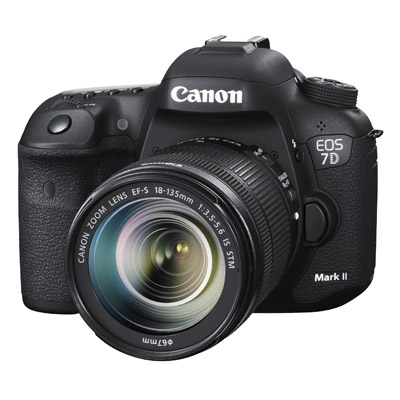 | Canon 7D Mark II Pros: Excellent camera body for action, excellent AF on almost the entire frame, customization from pro, ergonomic, excellent for those accustomed to 5D, double memory slot. Cons: Sensor that accuses the years especially for dynamic range and video tightness (but it was not born for that). It is not a body buys and snaps, it must be set properly for every shooting condition. Very pro-oriented rather than prosumer-oriented, it grants few errors. Opinion: After witnessing the production exit of the 77D and the same 7Dmkii I waited waiting for the hypothetical 7dmkiii. Given the release of the 90D, tested, I opted for a used 7dmkii, the 1.6x is convenient both for the focal length and the wallet. Of the 90D I was not satisfied with the AF (very similar to the 77D that I already own), and the decision to increase the density of the sensor against an increase in the performance of the iso seal; in my opinion a 7dmkii with a sensor of the 77D, but more performing with little light would have been the top, without considering that I always use the Canon 70-200 2.8 at TA and on the 77D already shows its limits in softness at 24 megapixels. To take advantage of the crop on 32 megapixels on apsc you must have the appropriate optics. Moving on to the 7dmkii I must say that at the beginning it did not convince me very much, as workability of the RAW I found the 77D better and more permissive. With the need to get the JPG ready I worked a lot on the photo style (I created some depending on the contexts and I uploaded to profile 1, 2 and 3), over and under exposure, focus options (quite complex, but if you have a 5dsr they are similar), customization of the WB; all I saved on positions C1, C2, C3 to have everything ready when needed. Now I am very happy with the result obtained. I read about the short battery life, I use little screen, very little, no stabilizer, but the AF of the 70-200 2.8 works constantly all the time and I make the machine generate the reduced JPG and I can shoot 1500-2000 shots before getting to the last notch. The sore button for me is the dynamic range more than the iso seal, let's say that up to 3200 iso does its job, above the noise there is, but unless you want to print large format does not give problems; the problem is the loss of chromatic detail in the midtones, in this aspect the 77D is better. Fantastic customization of the various buttons and selectors, customizations that are saved along with everything else in the "C" settings of the shooting mode selector. Another thing that made me choose compared to the 90D is the double slot for me fundamental, on the CF I keep the RAW and on the sd the JPG ready, otherwise double copy of the RAW. As for the construction is a 5D, solid, unaesthetic and not very useful flash pop up, but it has the advantage of being used as a Speedlite transmitter without removing flashes external to the scene. Unrivaled autofocus (if not 1dx mkii and mkiii, and R5), rarely misses a beat and also is a full frame af sensor mounted on APSC which offers a very extensive and detailed AF coverage. Fast shooting, silent mode. It obviously suffers on the other electronic features such as the absence of wi-fi that forces you to lose the sd slot to insert the transmitter. The eye proximity sensor is missing for turning off the screen that is not touch, defect only in case of video shooting because you can not directly select the focus. For the rest it has become my favorite machine for action. The exposure indicator to the right of the viewfinder is very useful for when using flashes such as fill in as you have the direct view of the over and under absolute exposure of the machine and the relative one of the flash light (selectable directly from the shortcut on the set button) so as to realize how far the flash deviates from the "zero" exposure of the scene; for normal use just the classic indicator placed under the viewfinder. The shutter bursts are customizable, so if in some cases 10fps is too much, you can lower them. Highly recommended for sport if combined with 70-200 2.8 also not stabilized that although a little soft, up to 20megapixel does not show excessive loss of resolution at TA. Really recommended. Convenient GPS for nature photography. sent on August 01, 2021 |
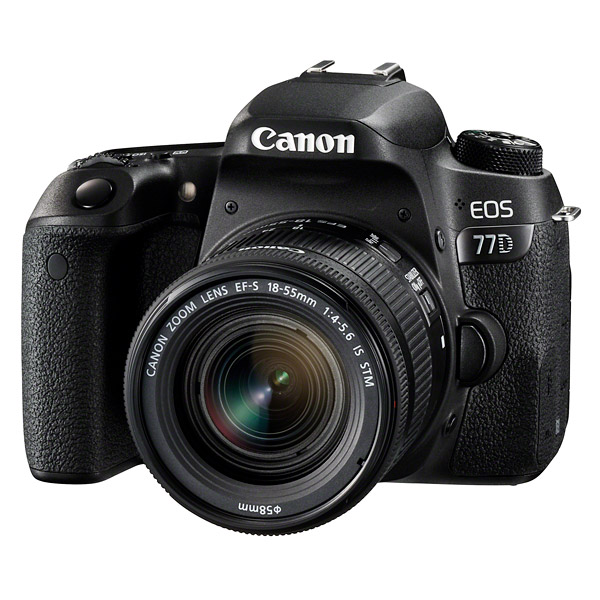 | Canon 77D Pros: Lightweight, good iso seal for an APSC, WI-FI, good entrylevel/prosumer compromise, pretty reliable Af Cons: Small handle and non-LP-E6 batteries, lack of Canon Battery Grip, lack of custom "C" profiles on selector and lack of possibility of switching via AF-ON button from AI-Servo to One Shot. Shutter button a bit cheap in my opinion. Opinion: Socket just out to replace the 450D. Obviously another planet than the previous one. Over the years I then bought 5Dsr and 7Dmkii, but I have always kept this camera body both because it is a good forklift to replace the 7Dmkii (which for AF, ergonomics and burst remains better), and because when I need to be light, coupled with the 70-200 f4 is an excellent replacement for the 7dmkii + 70-200 f2.8. I often use it on occasions where it is necessary to quickly upload race or podium photos on social profiles as coupled with wireless to the mobile device it is really intuitive and fast. It allows you to generate square jpg for social (with obvious cropping lines in the viewfinder and which further reduces automatically with Canon Camera Connect) and together keep the CR2 decidedly quality and very workable. I would have replaced it with the 90D, but as long as I still had a 24 megapixel with better iso seal; the house, however, preferred to keep the iso seal unchanged (from the tests I did, maybe I'm wrong) increasing the density of the sensor, for me useless and not very exploitable as at full aperture the 70-200 2.8 on 24megapixel apsc shows its limits. It has many functions that approach the professional in the management of color styles, af, microregulation of the shade of white, but have a less direct and more cumbersome accessibility than for example the 7dmkii. I find wrong and absurd the choice not to put the C profiles on the selector of the shooting mode in favor of the auto mode and not to put the possibility of switching from AI servo to One shot with the AF-ON button since it is present. The absent tropicalization allows some small element to enter the pentamipe, but considering the range of the camera body I would not regret it. I often use it also for video coupled with field monitors, but in this case equip yourself with batteries because the consumption is high. I have three so that by recharging that discharge I never get out of it. Worthy of note is the AF decidedly very similar in sensitivity and points to the 90D, obvious without the various multifunction cases also present on 7dmkii. I made careful but intense use of it for sport and nature even from 4000 shots a day. I recommend it for non-professional use or as a forklift of a 7dmkii or 90d. sent on August 01, 2021 |
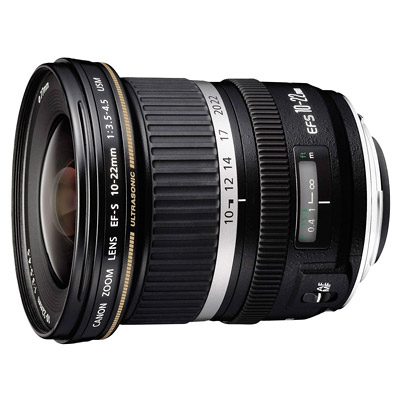 | Canon EF-S 10-22mm f/3.5-4.5 USM Pros: Light, crisp, distortions and flares almost absent, precise ring usm focus (you can switch directly to manual without ruining anything), price Cons: A little plastic (compared to L series), bulky and necessary lampshal - of course - needs ultra slim filters and the highest quality (the normal polarizer at 10mm vignette) Opinion: The only EF-S lens I held that still makes me hold an APS-C body. For a superior lens on FF you should take the 16-35 f/2.8L II USM. I have tried to make them wide-angle, but this one remains, among the cheap ones, the best ever. It has no stabilizer, but on an equivalent of 16mm I would say it is practically useless. Let's immediately dispel a myth, it is not in the least comparable to the EF-S 10-18, including STM; I am not just referring to sharpness, probably if you take landscape or action photography and are in optimal light conditions you may notice very little difference, but you just have to switch to architectural photography and maybe with critical bright conditions that 10-22 wins without a shadow of a doubt. The 10-22 needs very few lens optimizations in post-production which on a wide angle that collects many details and objects within a frame means little loss of quality. Above 20 megapixels it shows some sharpness limits at 10mm at the corners, especially on high contrast areas (trees on the sky), but all decidedly acceptable. The distortion in interior photography is barely perceptible. It's the only lens I recommend on APS-C, otherwise I switched to L ff lenses only. sent on April 25, 2021 |
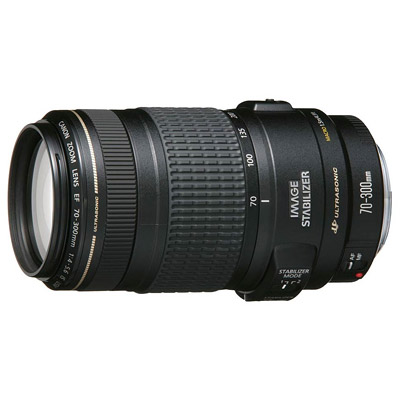 | Canon EF 70-300mm f/4-5.6 IS USM Pros: Small, Light, Economical, good yield in colors and sharpness for its price range, effective stabilizer. Cons: Barrel that rotates with focus, a little noisy and plastic. Opinion: I took used this lens with two years of seller guarantee at a really affordable price. Bought to have a forklift that can replace in case of failure the 70-200 2.8L that I sometimes use with the 1.4x II (in sports photography I need to use the reduced DOF to clean the background). Obviously as quality, solidity, sharpness, focus speed, price are not comparable optics. As machines I use a 77D and a 5Dsr that as a sensor density grant very little to defects. I personally recommend this objective, but I realise that with this range of objectives it is very fortunate. I had for example an Efs 15-85 that, up to 15 or 18 Megapixels defended well, passed to 24 I went crazy to have shots in focus at 15mm and read reviews instead of praising its quality. The 70-300 in question I believe will become my companion for hiking in the mountains (which are not aimed at photographic hunting) because it is a really good compromise weight / quality and price / quality. In a nutshell it is an optics that takes you into situations perhaps at risk without having the anxiety to lose two salaries in case of accidental damage. I am used to optics such as the 24-70 2.8L II, of course they are light years away as optical and mechanical quality, but if you are lucky enough to buy, now only used, a good specimen is a really good deal. After all, it's still a mid-to-low-end perspective made in Japan. sent on April 08, 2021 |
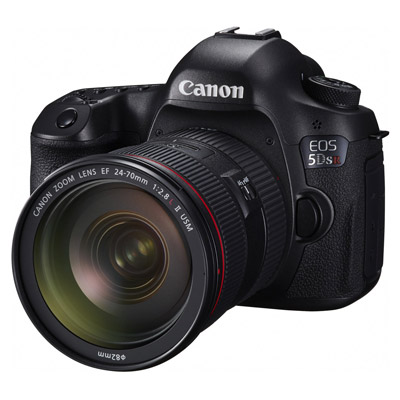 | Canon 5Ds R Pros: True resolution without sharpening, build quality, ergonomics, customization. Cons: Lack of built-in speedlite transmitter, requires uncompromising optics (forget anything that is not fixed optics or L-series), if you have no video claims anything else. Opinion: I delved into that full frame take. I was undecided between 5D mkIV and 5Ds/5Ds r; not that I didn't like the 1Dx mkIII, but I discarded it at the start so I didn't have to sell my kidney. The 5D mkIV I discarded almost immediately because I wanted a more extreme reflex, more shifted on the pure image resolution. Let's start with what are proclaimed as its flaws: micromosso and moiré. I come from an experience born with film on FD, then Eos 450D and Eos 77D. For economic reasons I have no stabilized L optics and I have become accustomed to shooting freehand with the 77D and the 70-200 2.8L. The APSC density of the 77D is significantly higher than the density of the 5Ds r (crop APSC 24mpxl VS. 19mpxl), so if you get used to a dense APSC you won't have micromox problems. Also consider that the mirror movement of the 5Ds r is cushioned and the mass of the machine body softens the vibrations a lot. Moiré: I photographed buildings with perforated sheet as a coating with different zooms, distances, inclinations; fabrics, grids, etc... Engaging for now I have not been able to see moiré, surely it will pop up at the least opportune time, but for now it has not presented itself except in cases visible to the naked eye. Take away these doubts, yes, maybe it is a bit compressed as a dynamic range and the has high iso noise that with 50mpxl you have to wait... On the other hand, flagship Canon (1Dx MkIII) has less than half the resolution just to better tolerate this problem, manage a low 16-point filter and afford to record 14 RAW/sec. It's a choice, it's not a quick and easy machine, but it gives satisfaction to the maniacs of resolution and nuances (finally I shoot panoramas and the foliage is not kneaded). I took a RAW, removed any post-production correction and it's more resolute than the 77D without that annoying forced effect of sharpening; defined and soft at the same time as for those who remember it was Fujifilm Astia 100 on 6x6. On both tests I used the 24-70 2.8L II at f5.6 and the 5Ds r , being less dense as a sensor, also showed fewer defects than the images recorded by the 77D. So look at the new super-resolute APSCs because they will demand extremely defined optics, you will see defects even in the most emblazoned optics. In the menus a lot of customizations, very useful and that should put on all models, is the minimum speed of click under which the sensitivity is automatically varied (which can be forced within a predetermined range). I read that someone called it a defect the lack of a touchscreen; yes, it's convenient, but then you should orient yourself on a mirrorless. At first when you set the reflex it is a bit of a mata to use sticks, keys and wheels, but it is a reflex: the eye must stand of the viewfinder and this body has all the necessary commands on the buttons. The only flaw for me is the lack of an IR integrated transmitter for speedlite that forces me to use one of the two flashes as a transmitter over the reflexes subtracting it from the scene. In 2020, any PC higher than the fifth-generation Intel i7 handles RAW shots in tolerable time, of course if you do 50 levels, masks, filters, etc., maybe you need a good graphics card or reduce pxl after the development of the RAW. In conclusion: do you want uncompromising resolution and soft nuances, but not kneaded? It's your reflex. Do you want to make videos or take home the safe shot even with optics not "top"? choose another model. sent on May 28, 2020 |
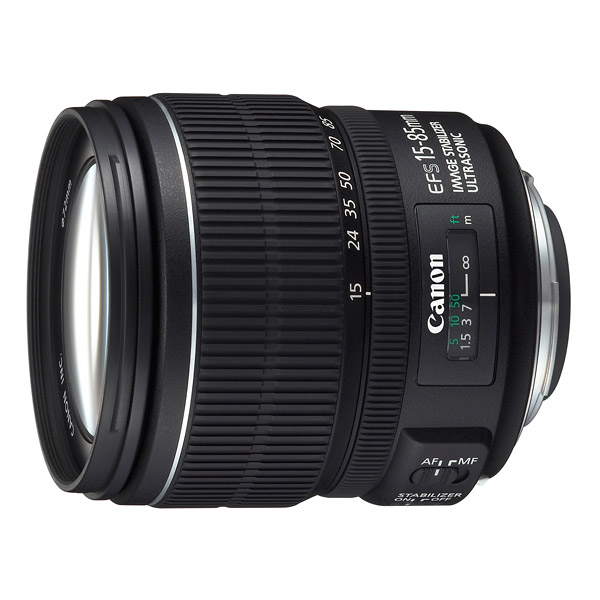 | Canon EF-S 15-85mm f/3.5-5.6 IS USM Pros: Light and maneuverable, versatile, minimum focus distance, efficient stabilizer Cons: Above 15 Mpxl shows its limits in terms of sharpness, barrel drift, vacuum cleaner Opinion: I used this lens to replace the 18-55 II kit on the Eos 450D and a 550D. Compared to standard optics another planet in terms of speed of focus, definition and stabilization. With the switch to the Eos 77D (24 Mpxl) he showed his limitations. At first I thought it was a focus problem, but with calibration performed I realized that it was just a matter of lens sharpness (compared to 24-70 2.8 II and 70-200 2.8 II). I recommend it, but look at the sensor you're going to mount it on. sent on May 18, 2020 |
 JuzaPhoto contains affiliate links from Amazon and Ebay and JuzaPhoto earn a commission in case of purchase through affiliate links.
JuzaPhoto contains affiliate links from Amazon and Ebay and JuzaPhoto earn a commission in case of purchase through affiliate links.May Beauty Be Everywhere Around Me